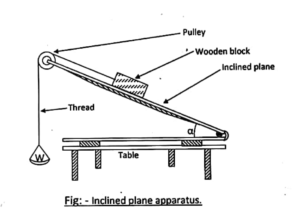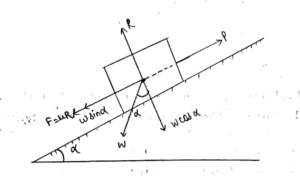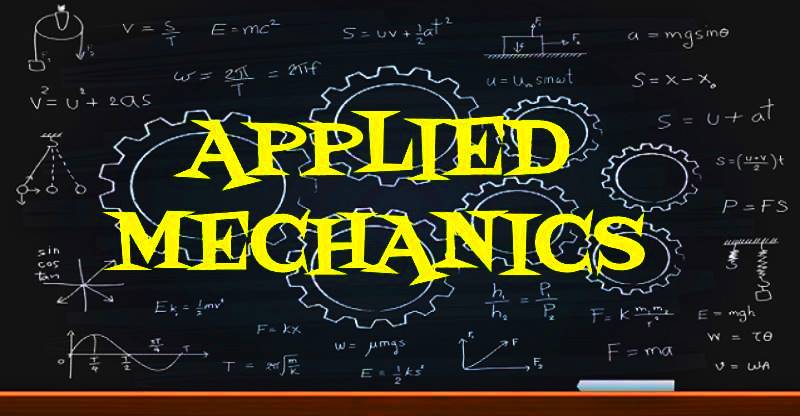EXPERIMENT
OBJECTIVE:
To find coefficient of friction between two surfaces on an inclined plane.
APPARATUS REQUIRED:
Inclined plane with top made of glass, scale, pan, thread, weight box containing weight up to milligram.
THEORY:
When a body moves or tend to moves over the another body then its motion is opposed by a resistance. This resistance force is called friction or force of friction or frictional force. The direction of the frictional force, acting at the point of contact of the surfaces, always acts in a direction opposite to the direction of the applied force or in which the contact surfaces tends to move. Force of friction (F) is directly proportional to the normal reaction (R).

F ∝ R
[frac up=”F” down=”R”] = Constant
[frac up=”F” down=”R”] = μ
Where μ is called coefficient of friction.

Consider body weight (W) on inclined plane on which when a force is applied it just tends to move up the inclined plane.
Resolve (W) in two components.
1. W sinα along the plane.
2. W cosα is perpendicular to the plane.
3. Since the body tends to move upward, the force of friction will be acting downward.
Under limiting equilibrium condition
R = W cosα
P = F + W sinα
or
F = P – W sinα
μ = [frac up=”F” down=”R”]
μ = [frac up=”(P – W sinα )” down=”W cosα”]
PROCEDURE:
- Set the inclined plane to the desired angle and note down the angle.
- Tie one end of the thread to the wooden box with steel base (block) of known weight and tie the other end to the scale pan of the known weight.
- Place the steel box on the inclined plane and pass the thread over frictionless pulley, let the scale pan hang vertically downward.
- Put the extra weight in the pan gradually till the wooden box with steel base (block) just tends to slide over the inclined plane in upward direction i.e. up the inclined plane.
- Note the extra weight which will the effort (P) applied to move the steel box up the inclined plane.
- Calculate the value of coefficient of friction.
- Repeat the experiment 4 times by varying the angle of inclination plane.
OBSERVATION TABLE:
| S. No. | Weight of block (W1) in grams |
Weight added in block
(W2) |
Total Weight W = W1 + W2 |
Weight of pan(P1) in grams | Weight added in pan
(P2) |
Total Effort P = P1 + P2 |
Angle of inclination (α) | Coefficient of friction μ = (P – W sinα )/ W cosα |
PRECAUTIONS:
- The thread should be free from knots.
- The plane should be kept perfectly horizontal.
- Place the weight in the pan gently.
- Pulley should be frictionless.
RELATED VIDEO:
For More Information:- CLICK HERE
